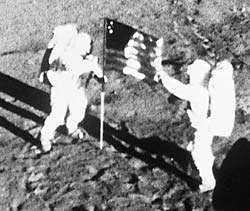NASA has long known that astronauts on long flights to the Moon or Mars will be exposed to higher levels of radiation from solar flares and cosmic rays than those currently on the International Space Station

NASA's goal of returning astronauts to the Moon by 2020 and beginning to move toward a manned flight to Mars will require making long strides in both understanding and preventing the dangers of Hal radiation. This is according to a NASA report published yesterday (Monday).
NASA has known for a long time that astronauts on long flights to the Moon or Mars will be exposed to higher levels of radiation from solar flares and cosmic radiation than those currently on the International Space Station, which floats within the Earth's protective radiation belt. However, long-duration flights could cause irreversible damage unless NASA makes a serious leap both on the biological front and on the solar physics front. This is according to a report titled: "Radiation risks in space and their impact on the vision of the return to space compiled by the National Research Council.
"Reducing the uncertainties that we have about the biological impact of radiation that we must dramatically improve as well as increase NASA's confidence as to the response that can be provided to this threat" said Daniel Baker, director of the Atmospheric Laboratory at the University of Colorado.
Baker, who about a year ago headed a team that compiled the 104-page report published today, added that solar physics studies will also provide better insight into space "weather" prediction and protection to ensure the safety of astronauts on interplanetary missions.
"During the Apollo era, the astronauts spent less than a week on lunar missions," the report states, "however, NASA's plans are to send crews to the moon that will stay on its surface for weeks or even months, and this increases the time they are exposed to unusual events of strong solar flares."
